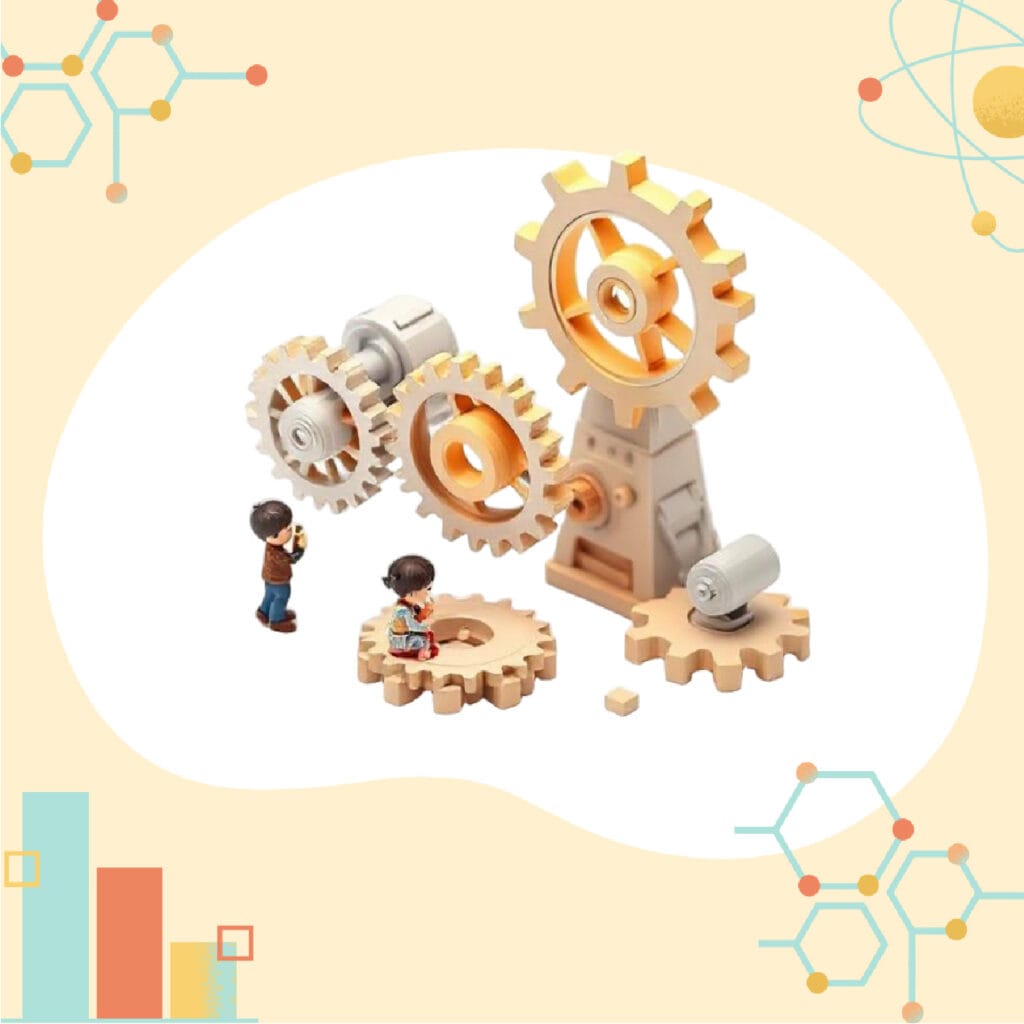Engineering
With the Young Engineers educational program, children are transformed into little Engineers! They learn the fundamental building blocks of mechanical structures as well as the physical principles underlying them, such as gear motion, pulleys, levers, wheels, and axles. Children create increasingly complex models of varying themes with appropriate building materials. They learn experimentally the usefulness of Simple Machines (gears, pulleys, levers) which is the basis of any construction (Engineering) and understand the concept of energy by introducing motors and batteries to give motion to the models they use. The aim of the lesson is for children to work in groups and understand the conversion of mechanical energy into electrical energy by using a switch manually.
Interdisciplinary topics
- Science: Friction, Energy transformation, Velocity, Force, Newton’s laws
- Technology: Simple Machines, Motion, Mechanisms
- Engineering: Problem Solving, Mechanical Advantage, Building Techniques
- Mathematics: Numbers, Motives, Calculations, Geometry

